
Year of the Dragon: Six Shrines to Visit in 2024
Guideto Japan
Travel History Culture- English
- 日本語
- 简体字
- 繁體字
- Français
- Español
- العربية
- Русский
Dragons as Decoration
Japanese images of dragons are a blend of three influences: China’s mythical dragon, the nāga of Hindu myth and Buddhist scripture, and native Japanese views of it as a water deity.
The Chinese dragon is a mythical beast believed to be a deification of tornadoes and other natural phenomena. It presents positive attributes of various animals—the body of a serpent, the horns of a deer, the claws of a hawk, the long whiskers of the catfish—and was considered an auspicious creature closely associated with China’s emperors.
The nāga of India is also a sacred animal and resembles a giant cobra. In Buddhist scripture, it is described as a guardian of Buddhism.
In Japan, the dragon, or ryū, looks like a Chinese dragon, but is venerated like the nāga as a protector of Buddhism. Dragons are associated with rain and have long been tied to folk beliefs about water, the creatures often being said to reside in the ocean or other bodies of water. This association with water is why shrines abound in representations of dragons. They frequently appear as decorative elements on temizuya basins for ritually washing hands or as carvings or paintings to protect shrine buildings from fire. They also decorate portable shrines (mikoshi) to express the idea that the deities riding in them are more exalted than even the ruler of the land.
Dragons themselves are objects of worship at many shrines, where they are venerated for reasons like bringing rain, stopping floods, and ensuring health, long life, and luck. Dragons also symbolize ki, the mysterious vital energy that can enhance one’s fortunes.
Below are six shrines associated with the worship of dragon deities.
Enoshima Shrine
(Fujisawa, Kanagawa Prefecture)
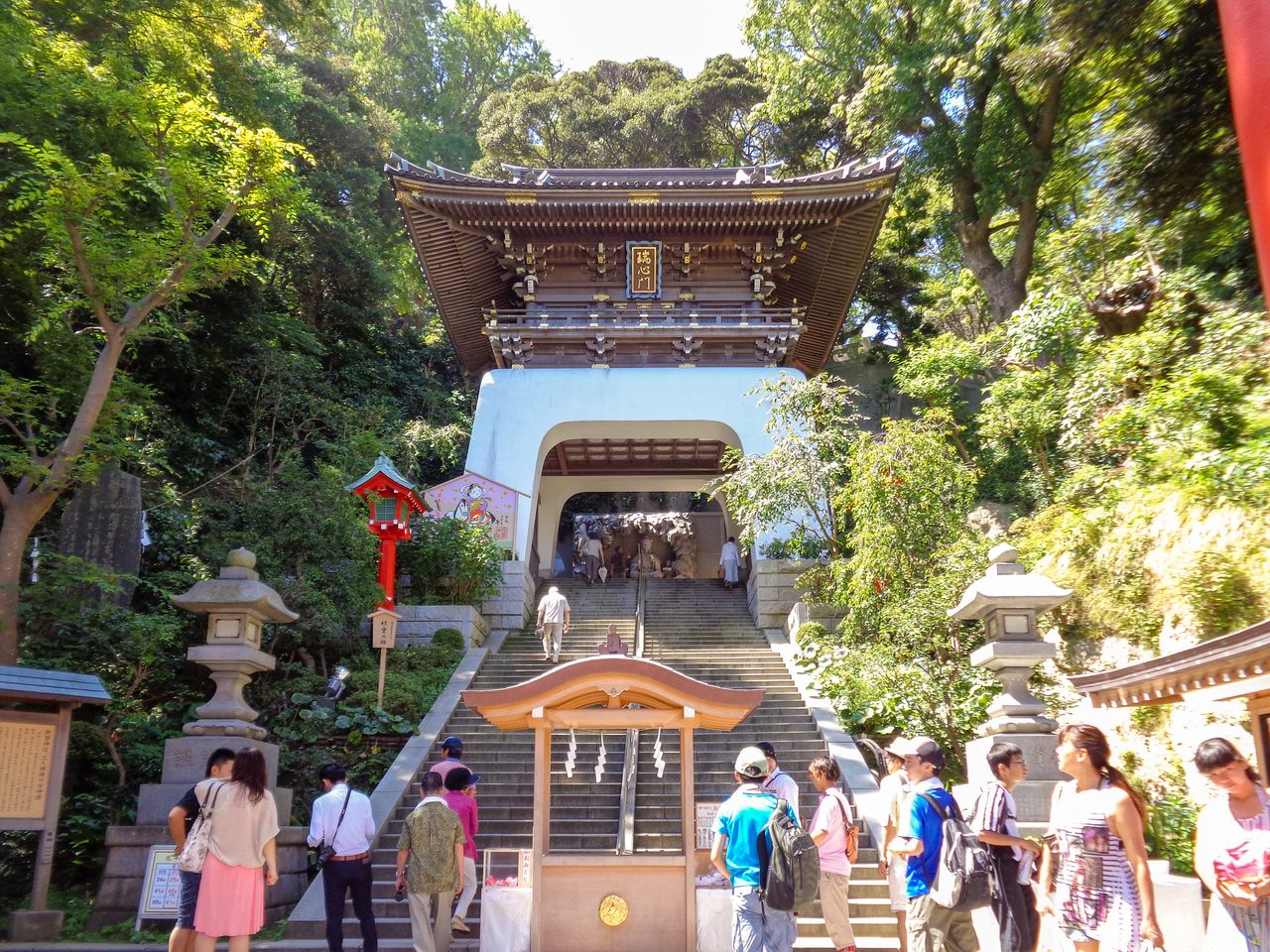
The gate of Enoshima Shrine is modeled on the mythical Ryūgū-jō, the undersea palace of Japanese folklore. (Courtesy Enoshima Shrine)
Enoshima Shrine takes its name from the island and popular sightseeing spot along the Shōnan coast where it is located. The shrine, a favorite of worshippers since the Edo period (1603–1868), venerates Benzaiten, a female deity derived from the Indian Buddhist tradition who is associated with such things as water, arts, wisdom, and wealth.
Legend tells that a heavenly maiden incarnated as Benzaiten created the shrine in the mid-sixth century. At the time, a five-headed dragon was wreaking havoc in nearby Kamakura. Distressed by this, the maiden admonished the dragon, which repented for its evil deeds. Enoshima was created when the maiden descended to earth, and she is enshrined as Benzaiten inside the Hōanden, a hall modelled on the famed Yumedono prayer hall at the temple Hōryuji in Nara. The dragon, meanwhile, is venerated at Wadatsumi no Miya Shrine inside the main shrine precincts. This dragon deity is said to have helped Kamakura shogun Minamoto no Yoritomo (1147–99) win in battle and ensured the prosperity of the clan of regent Hōjō Tokimasa (1138–1215).

Wadatsumi no Miya Shrine stands atop the grotto where the dragon supposedly lived. (© Shibuya Nobuhiro)
Kuzuryū Shrine
(Hakone, Kanagawa Prefecture)
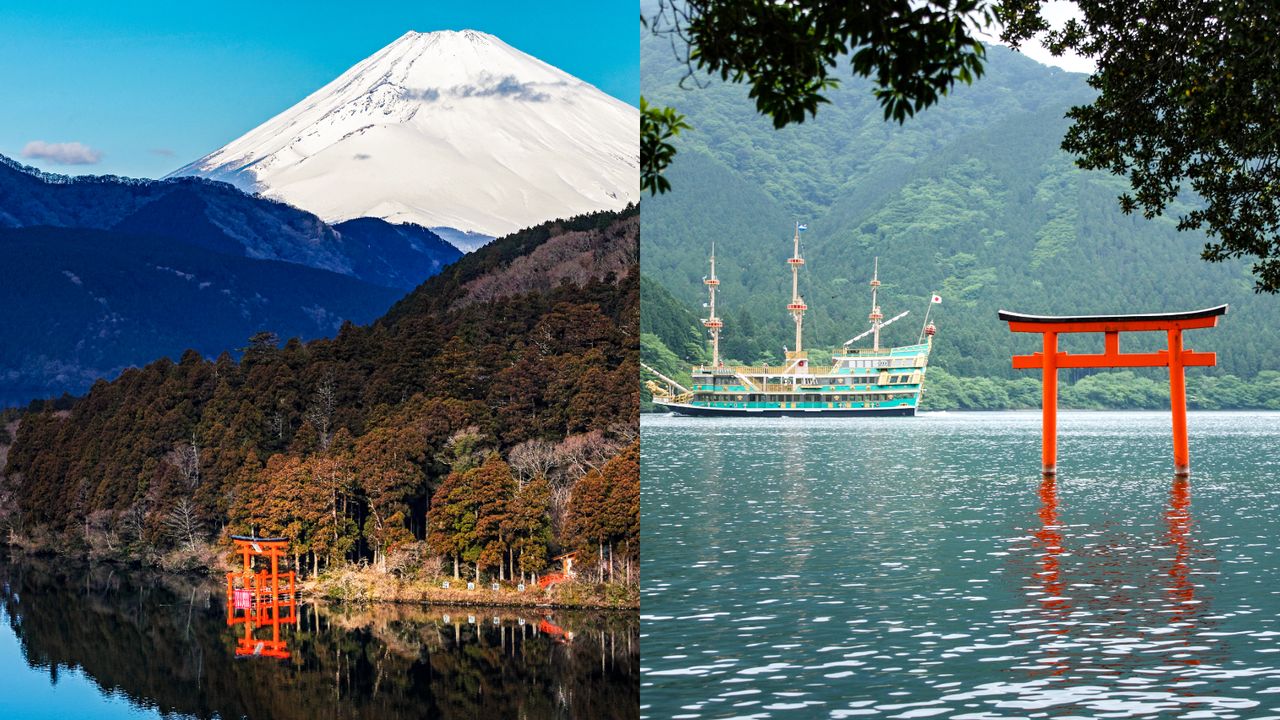
Hakone Shrine’s “peace torii” (left), a favorite of photographers, and the “floating torii” near the pier where tour boats dock. (© Pixta)
Easily accessible from Tokyo, the famous hot-spring resort of Hakone is home to Hakone Shrine, situated on the shore of Lake Ashi. Its vermillion torii gate, with Mount Fuji towering in the background, is a favorite picture-taking spot for visitors. The grounds houses a branch shrine of the Kuzuryū Shrine, the main precincts of which are three kilometers to the northwest in the Hakone Kuzuryū no Mori forest.
The main Kuzuryū Shrine is about a 30-minute walk from the nearest bus stop or parking lot, but on the thirteenth of every month, a special boat carries worshippers to and from the shrine for the Tsukinamisai, a Shintō ritual held there.
This shrine venerates the deity Kuzuryū Ōkami, who legend describes as terrorizing the local populace until it was subdued by a high-ranking priest and became the protector spirit of Lake Ashi. Kuzuryū Ōkami is thought to bring success in business and protect financial endeavors. It is also associated with finding a marriage partner and is particularly popular among those looking for love.
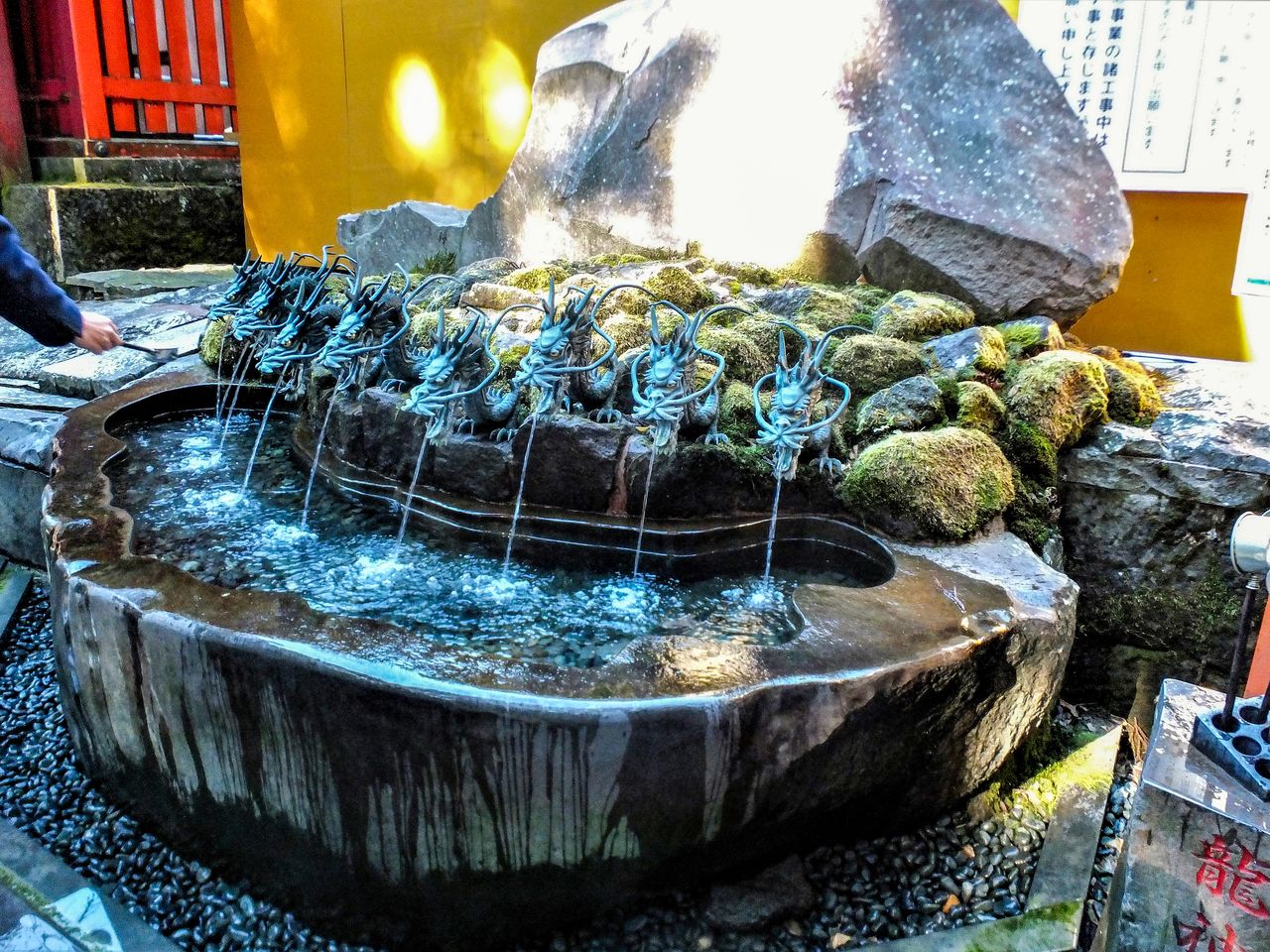
The temizuya basin at Kuzuryū Shrine. The water pouring from the dragons’ mouths is thought to wash away all impurities. (© Shibuya Nobuhiro)
Setabashi Ryūgūhidesato Shrine
(Ōtsu, Shiga Prefecture)
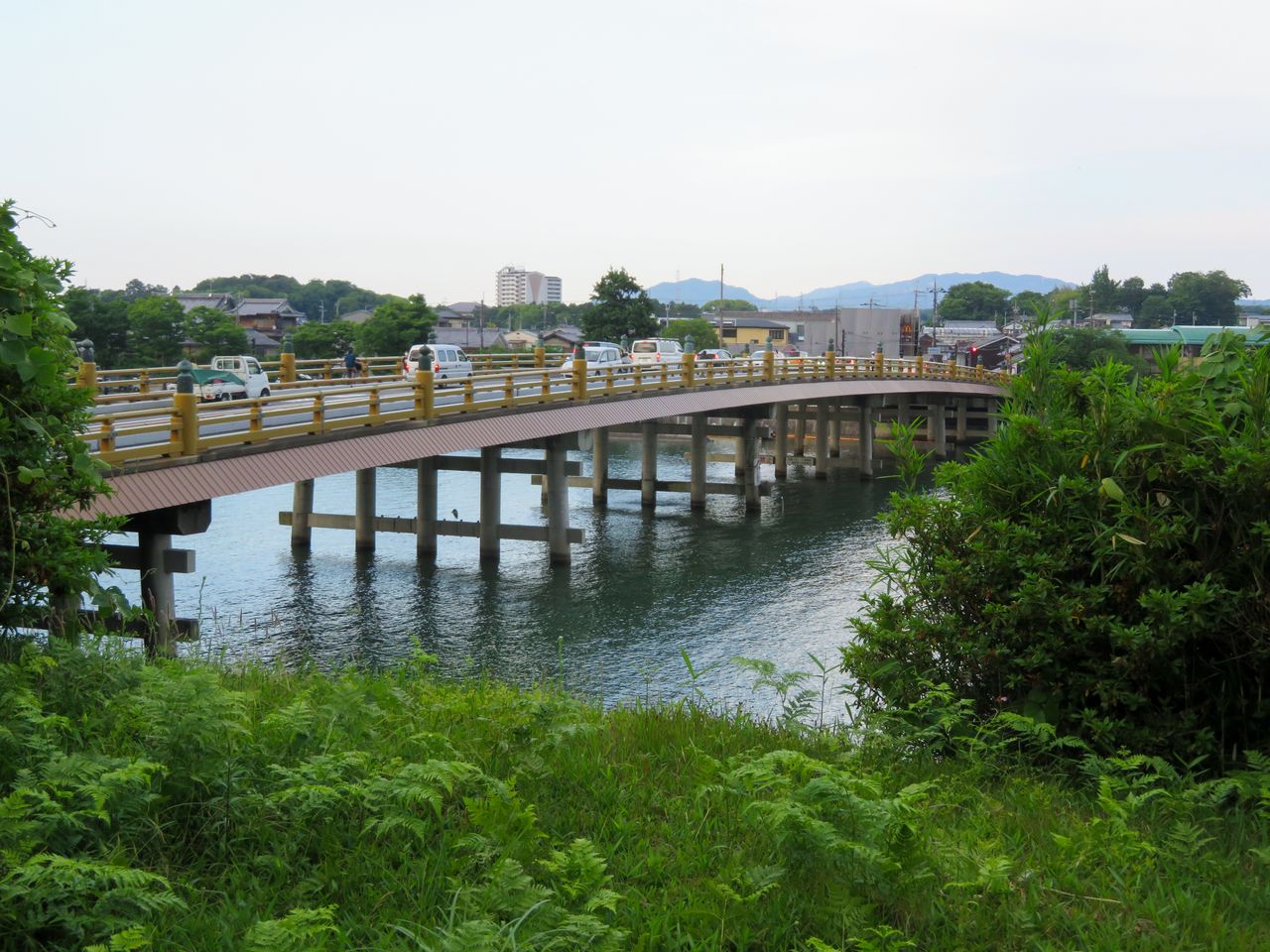
The Seta no Karahashi bridge features in a Ryūgū legend. (© Shibuya Nobuhiro)
Lake Biwa, Japan’s largest lake, is also home to a dragon deity, whose palace is said to lay under the Seta no Karahashi bridge spanning the Seta River at the southern end of the body of water. Tormented by a giant centipede living in a nearby mountain, the deity asked a passing samurai, Fujiwara no Hidesato, for help. The warrior slew the insect, and in gratitude, the deity showered him with riches.
Setabashi Ryūgūhidesato Shrine at the foot of the bridge venerates both Hidesato, who is also known for his heroic role in subduing a rebellion instigated by legendary warrior Taira no Masakado in the tenth century, and the dragon deity. While the centipede-slaying episode is a famous story recounted in the Taiheiki, a historical epic dating from the fifteenth century, the shrine is relatively unknown. Those worshippers who do come typically pray for victory in their endeavors, as per the legend.

From left: The unprepossessing shrine lies at the eastern end of the bridge; the worship hall enshrining the dragon deity and Hidesato. (Courtesy Setabashi Ryūgūhidesato Shrine)
Tsukubusuma Shrine
(Nagahama, Shiga Prefecture)
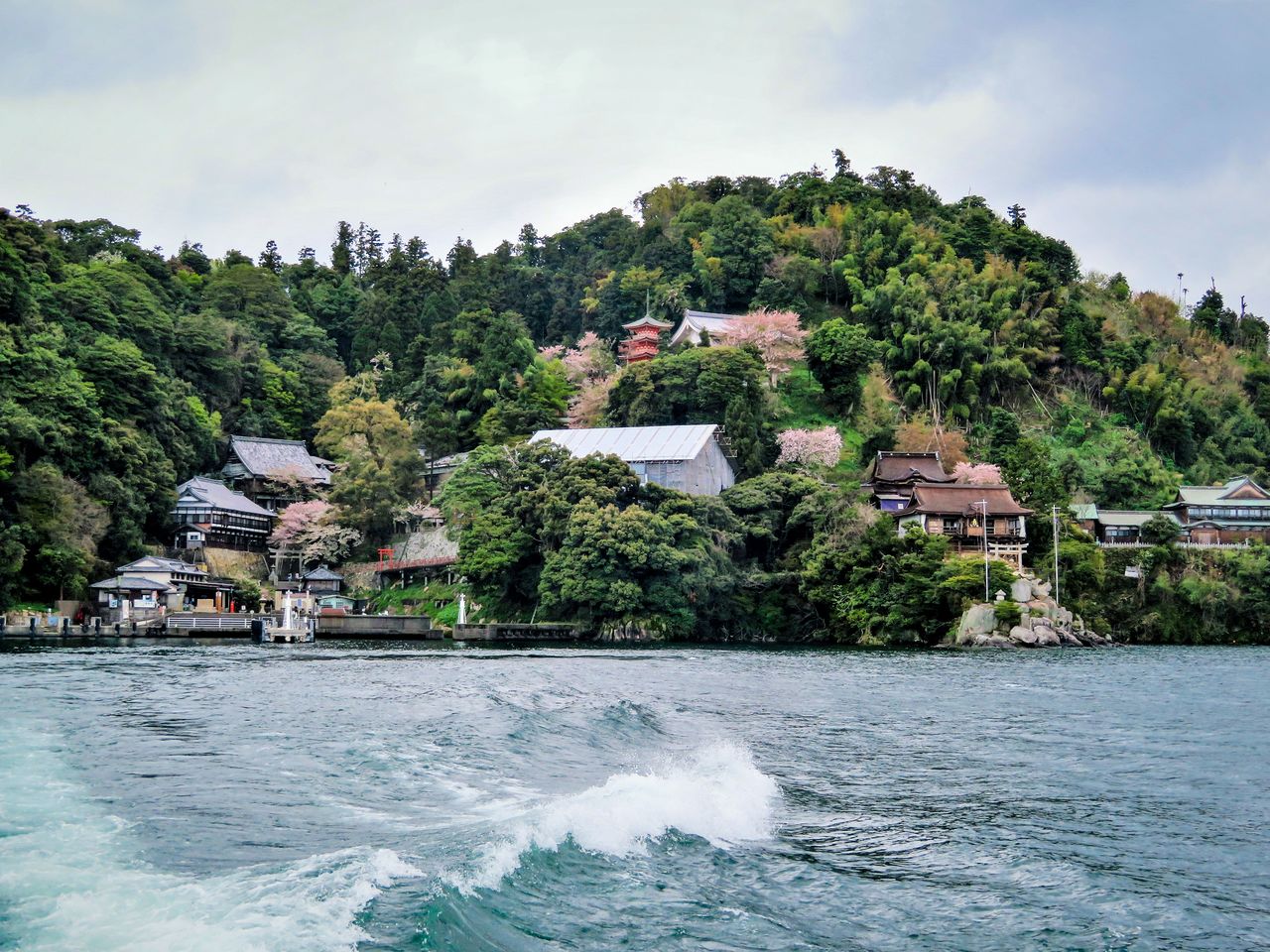
The Tsukubusuma Shrine on the banks of Lake Biwa. (© Shibuya Nobuhiro)
Chikubushima, an island on Lake Biwa, is another site associated with Benzaiten, who is one of Japan’s seven gods of fortune. One story has it that Benzaiten appeared in the form of a heavenly maiden to answer people’s prayers, while another maintains that she took the form of a dragon to protect the country.
Tsukubusuma Shrine, also called Chikubushima Shrine, on the island is associated with both Benzaiten and the dragon deity. Fronted by a torii gate, the worship hall to the dragon deity stands on a spit of land projecting into the lake. It is purported that worshippers who can successfully throw a clay plate through the torii from the elevated spot behind the gate will have their prayers answered.
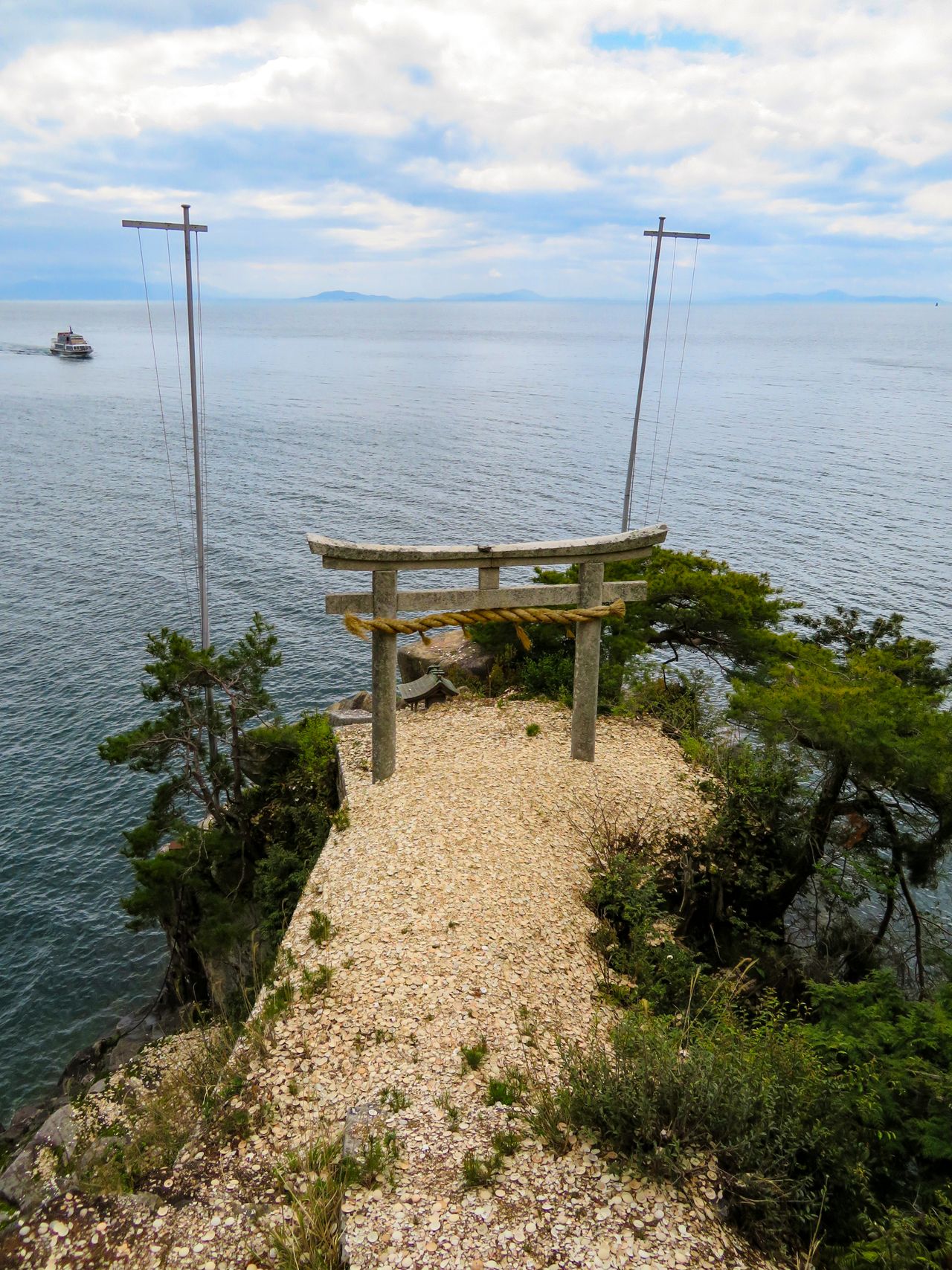
The interior of the shrine grounds are off limits, and worshippers instead throw clay plates from a hall at the front. (© Shibuya Nobuhiro)
Murō Ryūketsu Shrine
(Uda, Nara Prefecture)
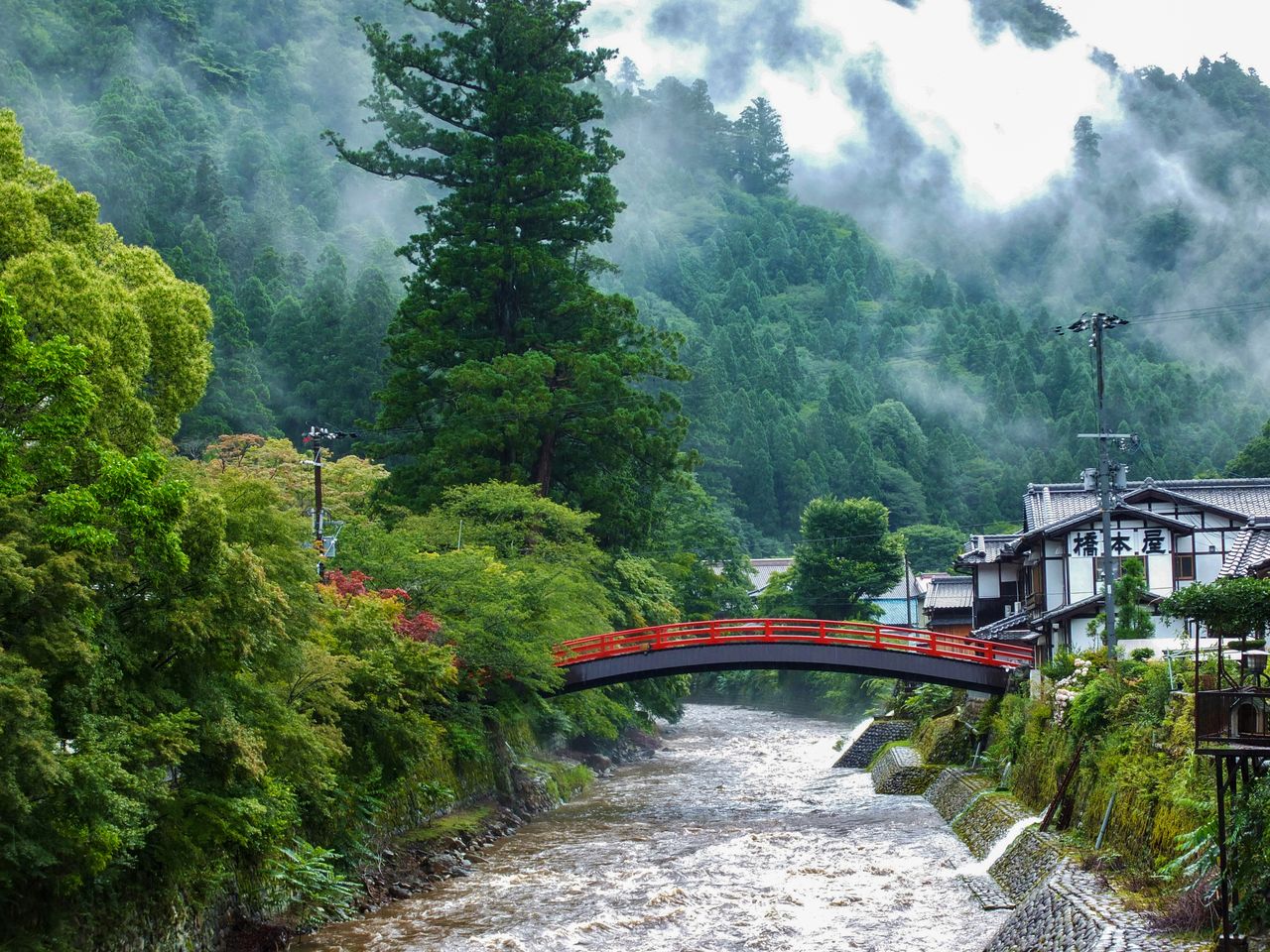
A picturesque arched bridge over the Murō River, near Ryūketsu Shrine. (© Shibuya Nobuhiro)
Nara temple Murōji is well known for its beautiful Buddhist sculptures and its pagoda set among the deeply forested terrain. Crossing the Murō River into the mountains, there are a host of small caves said to be ryūketsu, or dragon dens. During times of drought, the imperial court in Kyoto would send messengers to these hollows to pray for rain.
One of the caves, Kisshō Ryūketsu, is where the dragon deity who watches over Murōji Temple is said to live, and priests from the temple attend Murō Ryūketsu Shrine’s annual festival to pay their respect. The shrine is associated with water and is home to a pair of towering cryptomeria trees intertwined at the roots, the latter giving it a reputations as a power spot for those seeking romance.

Ryūketsu Shrine’s main hall (left) and the Kisshō Ryūketsu, which is a 30-minute walk up the mountain. (Courtesy Murō Ryūketsu Shrine)
Ebara Shrine
(Shinagawa, Tokyo)
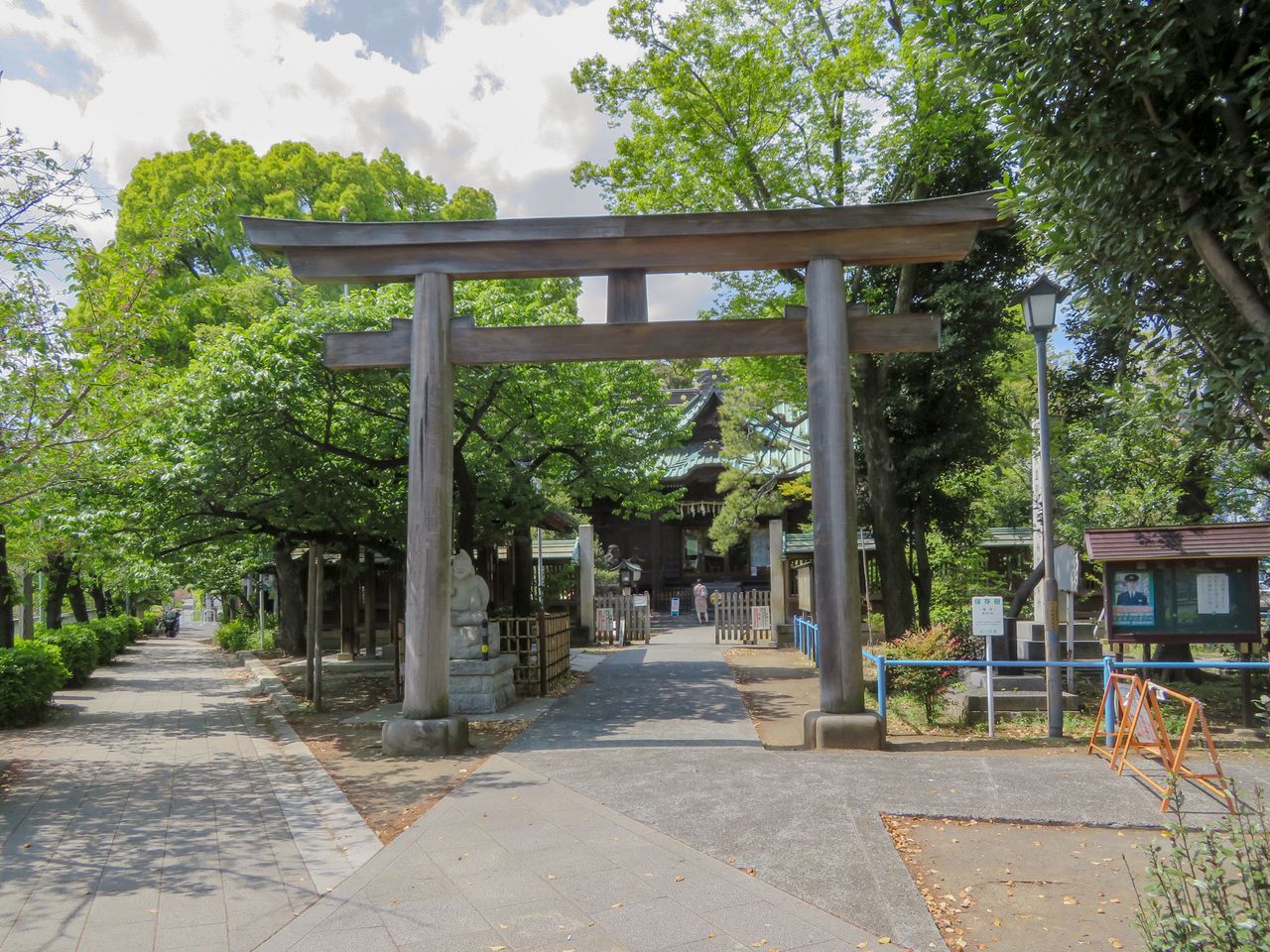
Ebara Shrine, favored by long-ago military leaders, was the protector of Shinagawa. (© Shibuya Nobuhiro)
Central Tokyo also has a shrine associated with a dragon deity, Shinagawa’s Ebara Shrine. The shrine, which is said to date from 709, houses the divine spirit of the dragon deity from a shrine on Nara’s Mount Yoshino, one of Japan’s sacred peaks. Minamoto clan warriors in the Heian period (794–1185) as well as members of the ruling Tokugawa family prayed here for success in battle, helping establish its reputation for granting worshipper’s requests.
Although shrines to dragon deities commonly feature motifs of the creatures, at Ebara Shrine, a dragon peers down at worshippers from atop a shrine building. This unusual feature alone makes the shrine worth a visit.
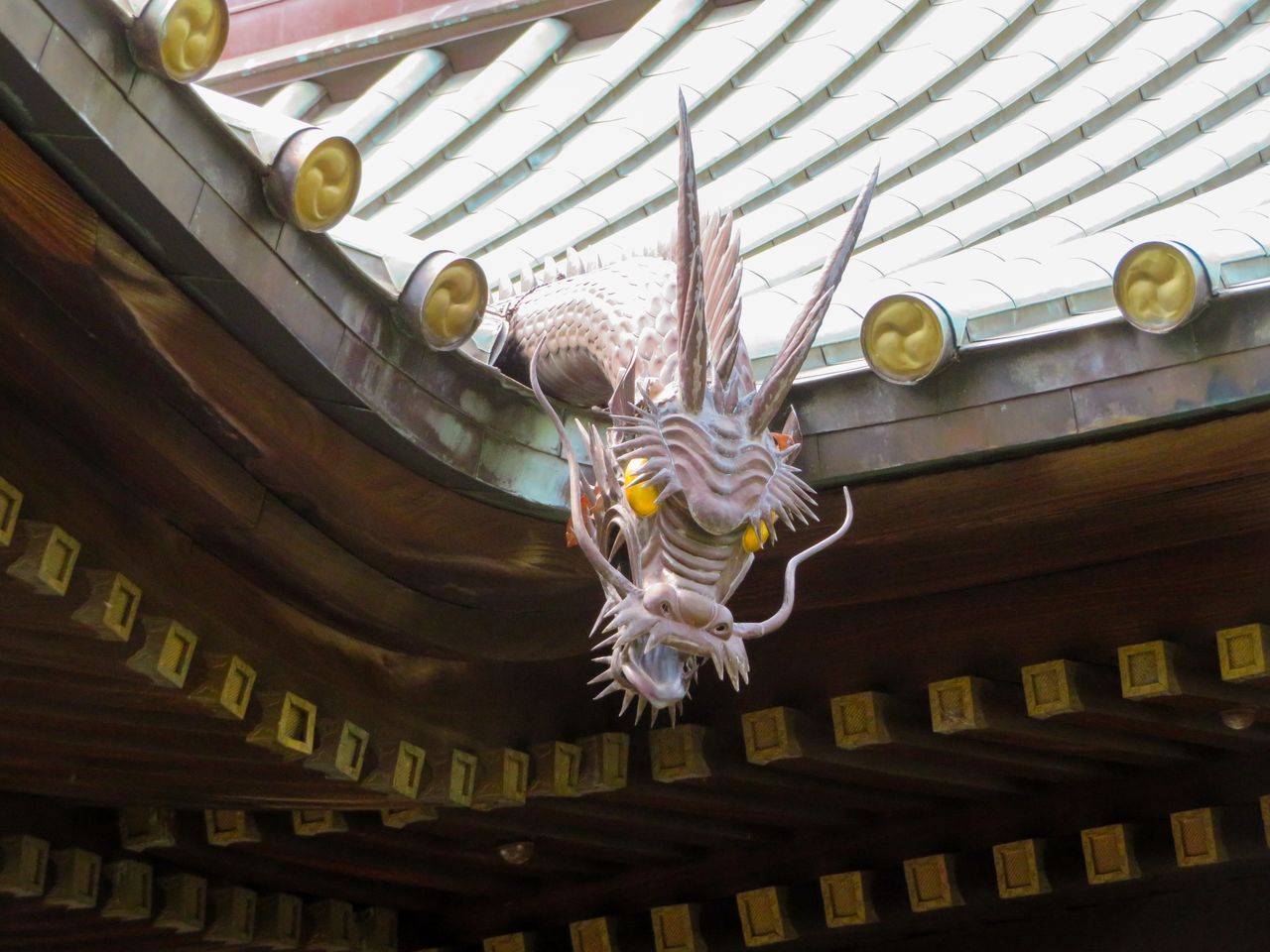
A dragon looks down from the prayer hall’s roof. (© Shibuya Nobuhiro)
(Originally published in Japanese. Banner photo courtesy Enoshima Shrine.)